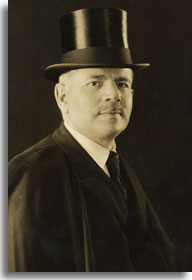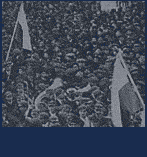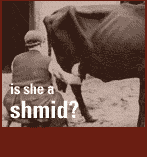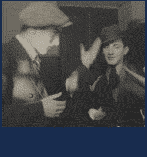

Jewish Professional Musicians


One of the major musical developments among Ashkenazi Jewry was the emergence of professional Jewish musicians who had well-defined, specific roles exclusively as musicians. A new development in the Jewish world, this had not really been the case since the time of the Temple. Nowhere else in the Jewish world did these types of musical professionals exist in such well-defined and particular roles.
Jews have always turned to talented singers to lead the synagogue prayers and to sing special solo selections. In Eastern (and Central) Europe, the position of prayer leader and religious singer grew to be a full-time and very important profession called the hazzan (cantor) ![]() . Cantors were considered to be important religious functionaries, though they did not have the same intellectual and religious authority or training as the rabbis. Their primary job was (and is) to lead the synagogue singing, to perform certain portions of liturgy on behalf of the congregation, and to religiously inspire the community with music.
. Cantors were considered to be important religious functionaries, though they did not have the same intellectual and religious authority or training as the rabbis. Their primary job was (and is) to lead the synagogue singing, to perform certain portions of liturgy on behalf of the congregation, and to religiously inspire the community with music.
Over the course of the 18th and 19th centuries, cantorial music developed from simple prayer chants and piyyutim  into elaborate artistic compositions, in some instances almost like a Jewish religious version of European classical music. In the 19th century, as the Reform movement
into elaborate artistic compositions, in some instances almost like a Jewish religious version of European classical music. In the 19th century, as the Reform movement  and the haskalah began to change the structure and nature of synagogue worship, for some congregations the role and influence of the cantor in Ashkenazi synagogues grew. Some cantors began to perform, accompanied by choirs of young Jewish boys known as meyshorim, who would travel and study with the cantors as apprentices. By the end of the 19th century, certain cantors had become famous throughout Europe for their unique and impressive artistic styles. It was not uncommon for the most celebrated cantors to be treated as international celebrities; many even performed in secular settings such as concert halls and also made commercial recordings.
and the haskalah began to change the structure and nature of synagogue worship, for some congregations the role and influence of the cantor in Ashkenazi synagogues grew. Some cantors began to perform, accompanied by choirs of young Jewish boys known as meyshorim, who would travel and study with the cantors as apprentices. By the end of the 19th century, certain cantors had become famous throughout Europe for their unique and impressive artistic styles. It was not uncommon for the most celebrated cantors to be treated as international celebrities; many even performed in secular settings such as concert halls and also made commercial recordings.
Outside of the synagogue, the other principal type of Jewish professional musician to emerge in Eastern Europe was the klezmer musician. During the late Middle Ages, Jews became professional musicians in many other parts of the world, serving as official court musicians for Islamic royal dynasties in Central Asia and the Middle East, and even for Christian rulers in Italy. But only in Eastern Europe did Jewish professional musicians develop a totally new, distinctively Jewish, kind of instrumental folk music, which later came to be called klezmer music. The biblical term "klezmer" originally only referred to musical instruments or to musicians who played those instruments. Jewish instrumental musicians had existed since the 15th century in Central and Eastern Europe. Klezmer music was a unique cultural blend of Jewish and non-Jewish musical elements, which included synagogue melodies, Hasidic nigunim, medieval German folk dance forms, and modern Greek and Turkish dance music. All of these elements were combined into a new, innovative and completely Jewish style of instrumental music.


Klezmer music was most commonly played at weddings in Eastern Europe, where it accompanied both the solemn moments of the religious ceremony and the wild, happy dancing of the party afterwards. A typical early 19th century klezmer band included several fiddles, a cimbalom (hammered dulcimer), and a bass. During the course of the 19th century more instruments were added, including the clarinet, horns, drum, accordion, and even the piano. The musicians were almost always joined by the badkhn, a combination of a wedding jester, comedian, and emcee, who performed both serious and comic sermons, toasts, jokes, and stunts during the course of the wedding festivities.











